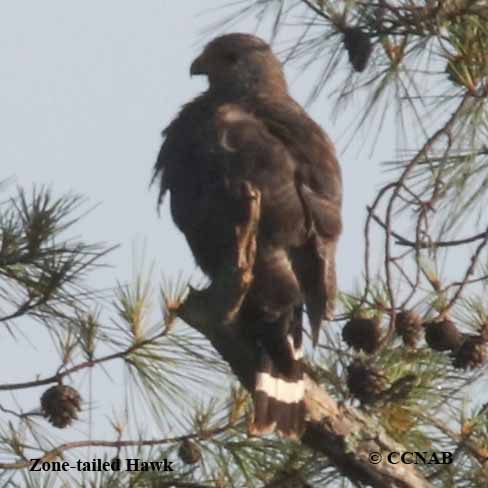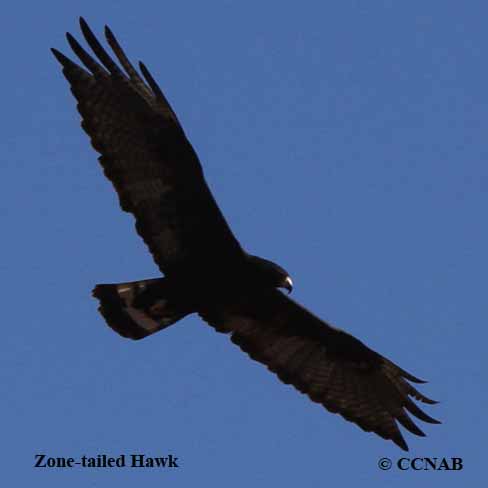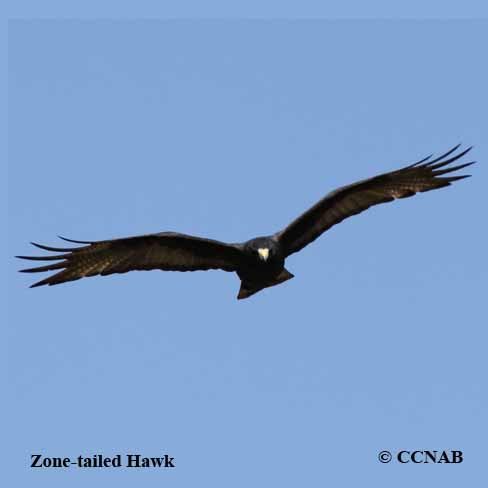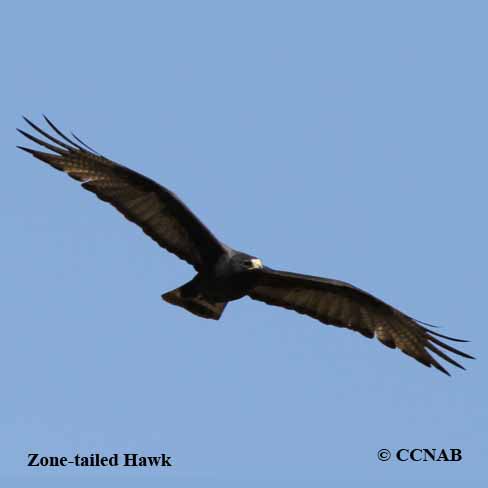North American Bird Search Box
This search box can be used to find bird species using bird's english, french or latin name, or to identify bird by its 4 letter Alpha Code
Field Guide for all the Birds of North America
Zone-tailed Hawk
4 Letter (english names) Alpha Code: ZTHA (2)
Buse à queue barrée
Buteo albonotatus
Information, images and range maps on over 1,000 birds of North America, including sub-species, vagrants, introduced birds and possibilities
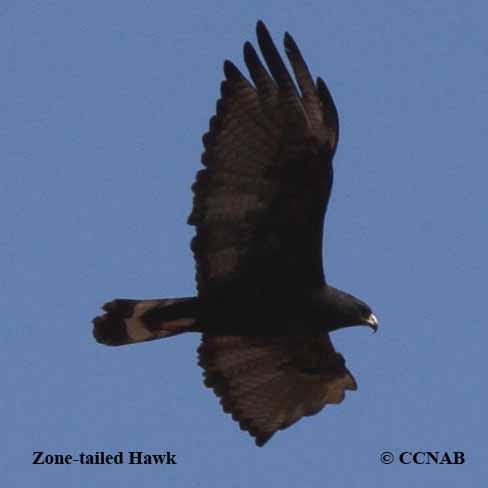
Species: The Zone-tailed Hawk (Buteo albonotatus) is seen along the southern borders of the US and also next to Mexico. This black hawk is known as an "aggressive mimicry", meaning a predator mimicking a non-predator. By behaving like this, the buteo flies in a similar manner as the Turkey Vulture (Cathartes aura), wings held in a dihedral manner, slowly flying in a flock of vultures. This allows the Zone-tailed Hawk to approach its unwary prey, diving upon it at the first opportunity.
Distinctions: Adults are similar, females larger than the males. Mostly all black plumage, long tail feathers, with one large white band, smaller white bands near body. Yellow legs, shorter than when compared to the Common Black-Hawk. Juvenile similar to parents, except it has multiple thin white bands on the tail feathers.
Voice: Similar to other birds of prey, most likely a two syllable note call sounding like "kii yiir".
Nesting: Two to three white or bluish eggs, dotted with lavender and brown specks. Nest built in the higher limbs of mature trees, likely to be cottonwood, a common tree found close to water sources. Nest composed of branches, sticks, twigs, grasses and other soft materials.
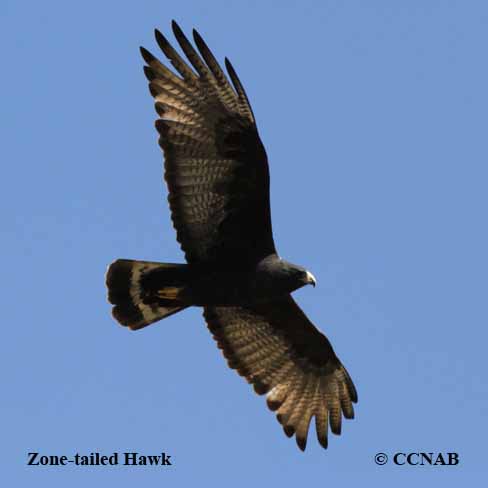
Life, Habitat and Pictures of North American Hawks
| B L | W W | W | Family | Latin Name |
|---|---|---|---|---|
| 20" 50.8cm | 51" 129.5cm | 1.8 lb 816.5g | Accipitridae | Buteo albonotatus |
North American Birds Calls
- Click here
- Click here
- Click - young hawks
- Click - young hawks
- Summer
- Year Around
- Winter
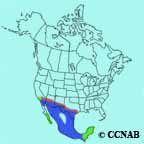
Distribution: Found only along the southern borders of the US and Mexico, from California to Texas, reaching into southern Utah and Colorado. There does seem to be a pattern, where their population may be expanding more into the northern parts of the states, where they now exist. Common and more likely to be seen in the southern areas of Mexico and Central America.
Reference to Other Bird Site:
ABA - American Birding Association This site represents an organization that maintains official records of all birds species that have been proven to have been seen inside the perimeters of the North American Continent and the surrounding bodies of water. Regular revised versions are posted to keep the bird list current at all times. This is the list used by all serious birders over their lifetime. You may be aware of the movie called the "Big Year". It was with this list that all the competing birders used in an attempt to set a new record as to how many bird species that could be seen by an individual birder in one calendar year.
